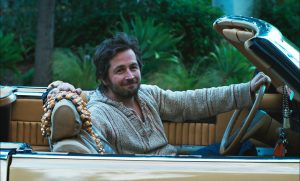
Go West for the historic & awesome adventures of Durango, Colo.
I’ve always been one to romanticize the settling of the American West. I’ve spent my life devouring books about it. “The Harvey Girls,” the story of how women, many former mill workers from Lowell, searching for a better life helped shape the West; “Ladies of the Canyons: A League of Extraordinary Women and Their Adventures in the American Southwest” is another (with more Massachusetts ties including Boston and Nahant). I love books about men forging a trail there too; to me, it’s all exciting and historically relevant.
If you too thirst for this, there’s a portal to do more than read and dream about that time and place: It’s called Durango, Colorado.
Durango sits tucked into a valley of the San Juan Mountains, hugging the long and strong Animas River. It’s clear when you arrive just why those who first organized a town there in 1880 chose the site. Their motivation was a means to expand railroad service, in this case to reach Silverton and create a route to the rest of the world for the gold, silver, copper, lead and zinc that was then abundant there.
They picked the right spot. By 1885 the new settlement’s population soared to more than 2,000, and hotels, restaurants, blacksmiths, saloons, shops and more lined both sides of Main Street, Second and Third Avenues.
While those mining days have passed and more modern businesses help the city thrive (outdoor recreation and historic tourism, the nearby Purgatory Ski Resort, a vibrant college and yes, train travel are the mainstays), the historic city, as well as the outposts of jagged mountains, wide river spots and wide open space bring those early days back to you.
Arriving in Durango via their quaint but modern Durango-La Platte County Airport is a breeze. While there are no direct flights from eastern cities, there are easy connections in Denver, Dallas and Phoenix; they are hoping for more connections from Houston in the near future. Grabbing a rental car is easy there, and thanks to excellent signage and relatively straight routes into the city and mountain region, you won’t feel lost.
But at first you might feel confused: As you arrive in town via the Hwy 550 / San Juan Skyway Scenic and Historic Byway / Camino del Rio (three names for the same road), you’ll first see strip malls, businesses and some traffic lights. Fear not – that’s just the small part of the region that’s been carved out for modern convenience. Bang a right and head down two blocks and you’re in the Historic District. Soaring mountain peaks frame the scene and some of the very buildings and businesses that popped up in the 1880’s. It’s magnificent.
I chose to stay right in town at the newly reborn Gable House Bed and Breakfast (https://www.durangobedandbreakfast.com/). A stately manor with a history of its own, it sits in the “Grid” section of Durango, blocks of mostly classic Sears and Roebuck Arts and Crafts-style homes and an easy walk to the historic district.
The innkeepers are friendly, helpful and passionate about their city.
The Strater Hotel and Palmer House, both in the middle of the district, date back to the early years and still hold much of that historic charm.
You’ll want to dedicate at least a full day to meandering in town. The historic district is home to so many unique and locally owned shops, you can spend all day poking around and finding treasures. At Maria’s Bookstore I found more books to quench my settle-the-West passion and nice people; the same family had run it successfully for more than 40 years.
There are art galleries, cowboy-themed shops with amazing boots, outdoor equipment spots and more.
Dining on every level is spectacular and almost always locally sourced. From the simple beauty of green chile sauce at the 70-plus year old Durango Diner (get the diner burger smothered in it – and expect the cook to chat you up; they’re Durango-nice there) to the exquisite presentations at Eolus (https://www.eolusdurango.com/), you’ll be pleased. I loved my afternoon scone and latte break at Jean Pierre as well. And you must stop in at the Strater and Palmer as well for lunch, dinner or a drink – to dine where the original townspeople did.
And while you could stay on those blocks forever and never lose interest, heading to other parts of the region is well worth it. Hopping back on Highway 55 takes you up along that river past ranches, the ski resort and the Durango Hot Springs (durangohotspringsresortandspa.com/), a spot worth at least a half day or your time on its own.
You’ll find local watering holes, hiking and biking spots, wildlife and jaw-dropping scenery.
My time there let me touch, see and experience the places I’ve long been fascinated with. Reading is great; being there is everything.
Must-do Durango experiences
Durango Hot Springs (https://durangohotspringsresortandspa.com/) have been a huge draw for decades; you can spot photos of famed politicians and celebs.
Recently, new owners gave it new life with some upgraded and updated extras. The more than $10 million project shines. There are 41 unique thermal mineral water features, including 26 natural mineral soaking pools, 8 private Japanese-inspired cedar soaking tubs, a reflexology walking path, and a rain tower. Other amenities include a resort-style swimming pool, concession area, and cold plunge pool.
Trains, trains, trains: Durango was founded because of trains, and that history is celebrated not just with their amazing museum in the heart of town, but with actual train rides. Long, short, or in the middle, you can take a ride on the narrow gauge railroad all the way to Silverton and back, or choose other routes. (https://www.durangotrain.com/)
Nature: Easy drives from Durango proper, you’ll find the Mesa Verde National Park, where you can see and tour ancient cliff dwellings; San Juan National Forest, where you can hike, bike and take in beautiful views, and the “Million Dollar Highway” ride, a drive along some of our nation’s most beautiful and very much untouched landscape.
Culture: There are so many cultural events in Durango, you can pretty much pick your passion and plan a trip around one. From music (like the Ragtime and Early Jazz Fest), an annual film festival, a summer brewfest, a cowboy gathering and more. You can find a full list – and ways to plan a trip around them or any other time, at https://www.durango.org
There’s more: Durango is a haven for cyclists – both mountain and road, a top hiker’s destination, an artists haven and more. That just means there’s more reason to return.
In town and at spots and as you drive along the Million Dollar Highway, you’ll take in breathtaking mountain vistas. (Photo Moira McCarthy)
Durango’s Historic Downtown is packed with 19th century buildings like the Strater Hotel, where you can stay or pop in to dine at the Diamond Belle Saloon. (Photo Moira McCarthy)
The newly renovated Durango Hot Springs are a must visit. (Photo Moira McCarthy)


